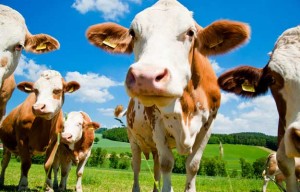A millions insects? Or a single creature? When ants get together they form sort of a super-organism. They work together very much in sync. Army ants, from the rain forests of Central America, eat everything in their path. They take ant social behavior to the absolute extreme, they move and hunt like a single predator; one autonomous being. Individual workers are like cells in the human body, some are specialized just like the cells in our body.
Anything that stands in their way will be overwhelmed. Army ants have large scissor-like jaws called mandibles. They use them to cut their prey into pieces. They don’t eat and then digest. At the same time they are cutting their prey, they secrete a dissolving acid that liquefies muscles, tendons and other tissues so that they can eat during the attack and move onto their next prey sooner.
Army ant are fast, so most prey can’t outrun them. Therefore, the only defense it to not move at all. Army ants are nearly blind and they can only faintly see the difference between light and dark. They detect prey by movement and the smell of pheromones.
Some of the ants are scouts which go out and forage for food. If they find something they will release a specific pheromone that will call the other ants for reinforcement. They can easily kill bugs more than six times their size.
Some prey is carved into pieces and toted back to the colony. With their numbers they can carry pretty much anything. Actually ants are so numerous that they outweigh all humanity.
Army ants are not one type of ant, it is just a term to describe the over 200 species of ants that form predatory groupings that raid an area in a huge group simultaneously.
Unlike some other ant colonies, they only have one queen. Scientists think that the reason why army ants act so much as a group is because they all rely on one queen to extend their progeny. The fact that all of the worker ants (which are mostly female by the way) give up their right to reproduce makes the ants less autonomous and not at all likely to leave the colony and go off on their own.
You can tell the queen of arm ants just by looking at her. She is much bigger than the other ants and has a very enlarged gaster. Queens will mate with multiple males and their enlarged gaster allows them to produce 3-4 million eggs a month. This results in an enormous brood that are all synchronized in development and that are all related to a single queen, meaning they share most of their genes with their sisters.
To only way a colony can get a new queen is when about every three years a colony will get too big to continue and at this time it will split off into smaller colonies, each having a new queen. Conversely if a queen of a colony dies, that colony can join another colony.
The nesting habits of army ants are also interesting. They do not build nests like most other ants. Instead, they build a living nest with their bodies known as a bivouac. They tend to locate themselves in tree trunks or little burrows. The members of the bivouac apparently hold onto each other’s legs and build an organized ball-type structure. The oldest workers are on the outside because they are the least valuable, while the queen and brood are farthest interior. When the ants on the outside sense a disturbance, soldiers are quick to gather and are ready to defend the nest.
picture 1: http://www.myrmecos.net/2011/02/03/army-ant-week-is-imminent/
Picture 2: http://www.bbc.com/news/science-environment-28739371


